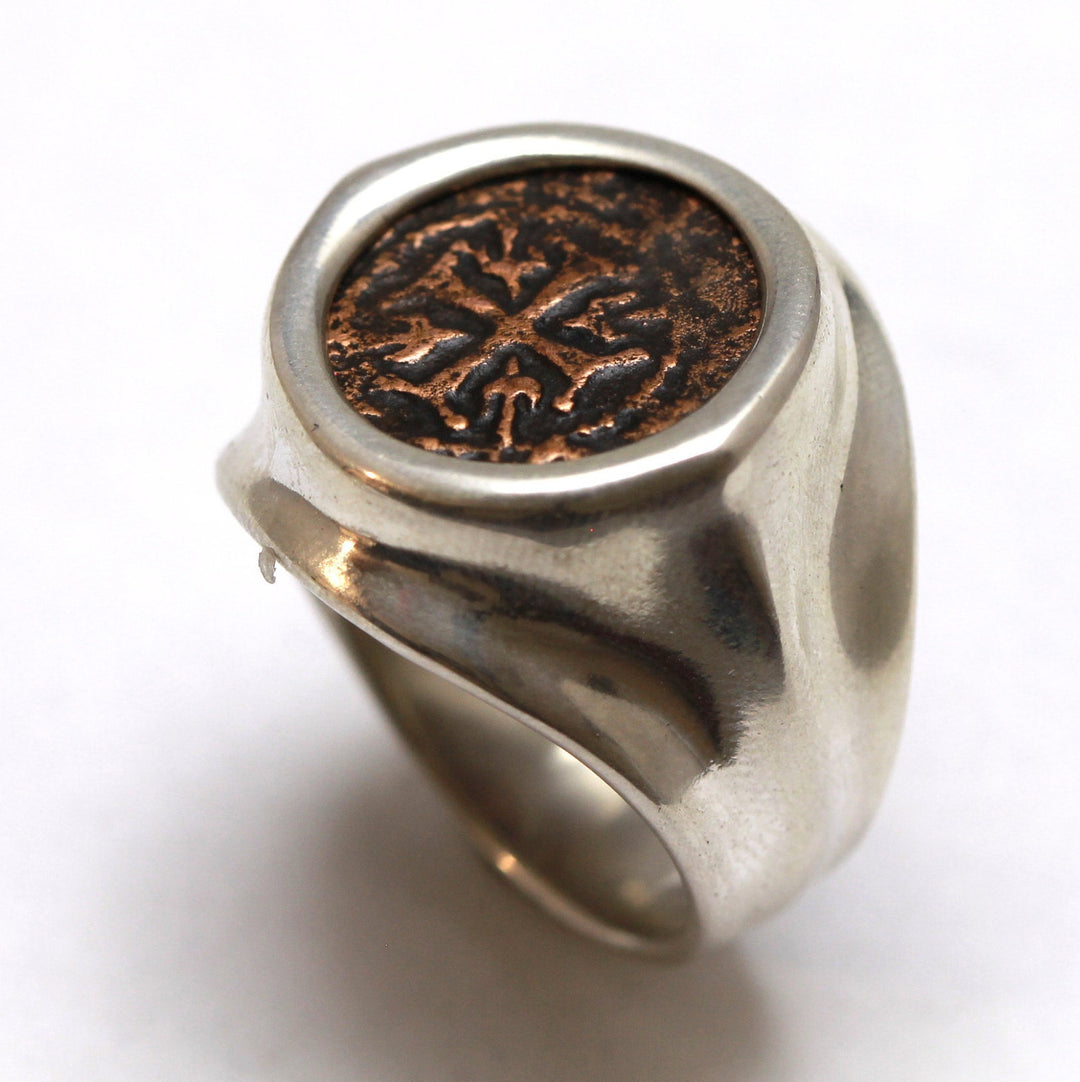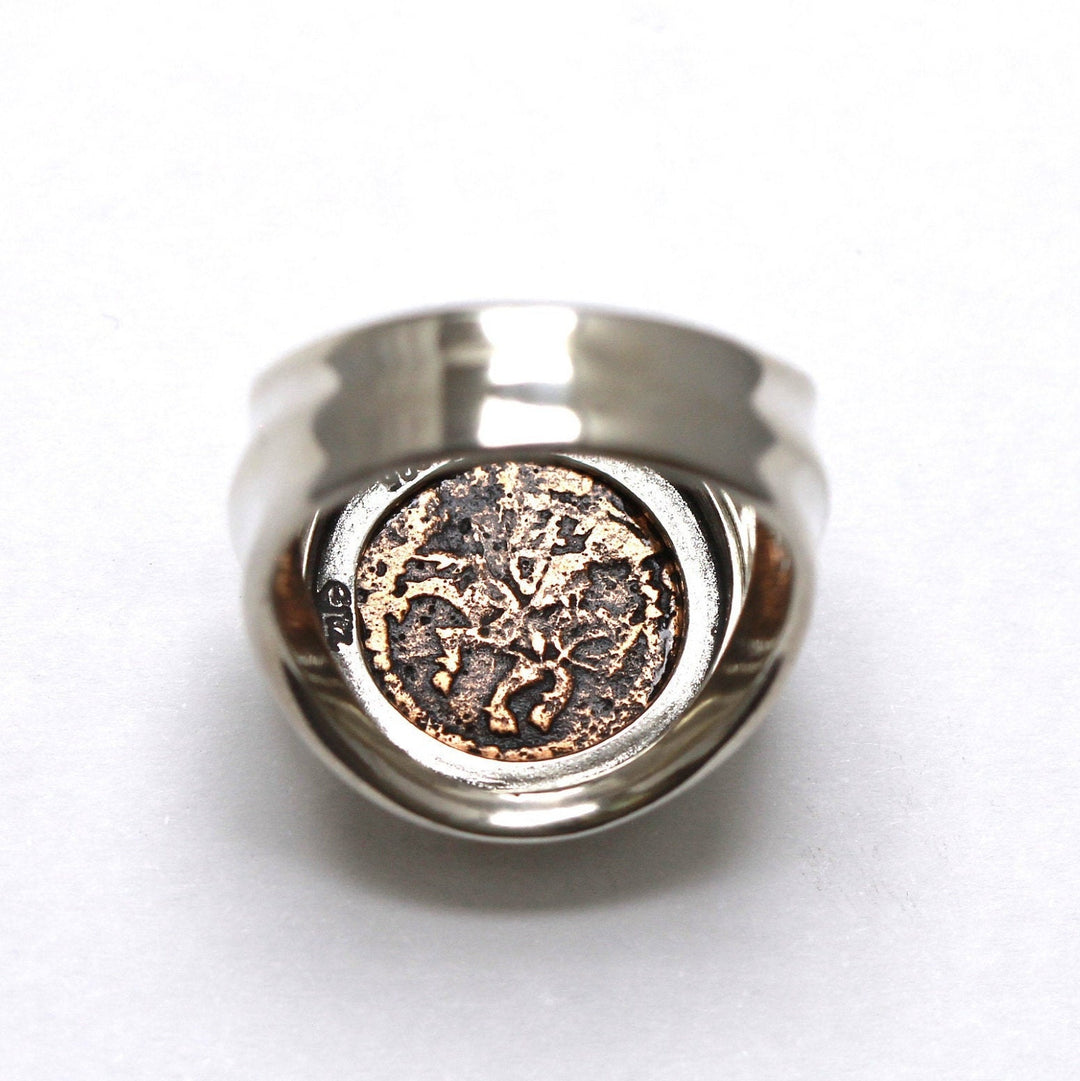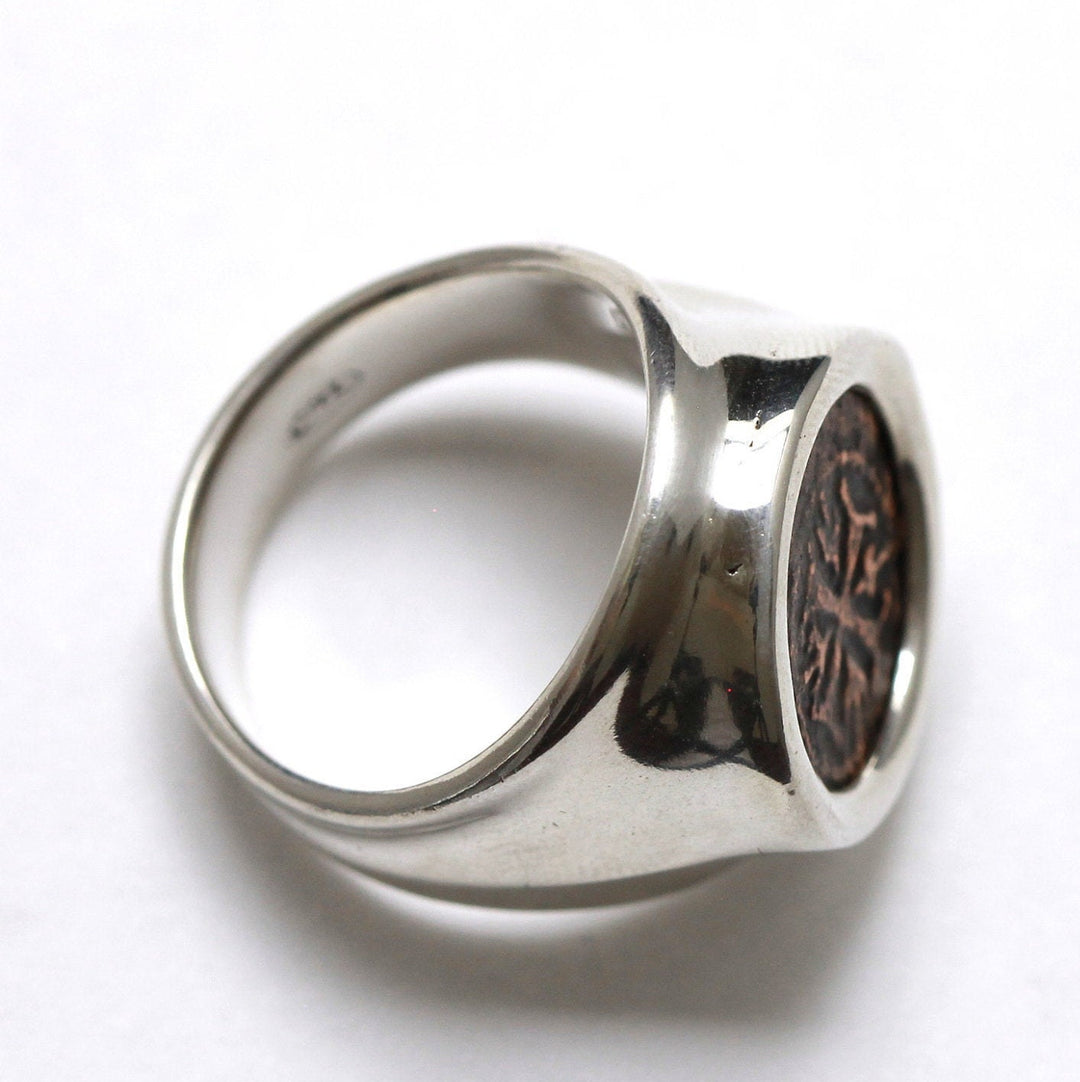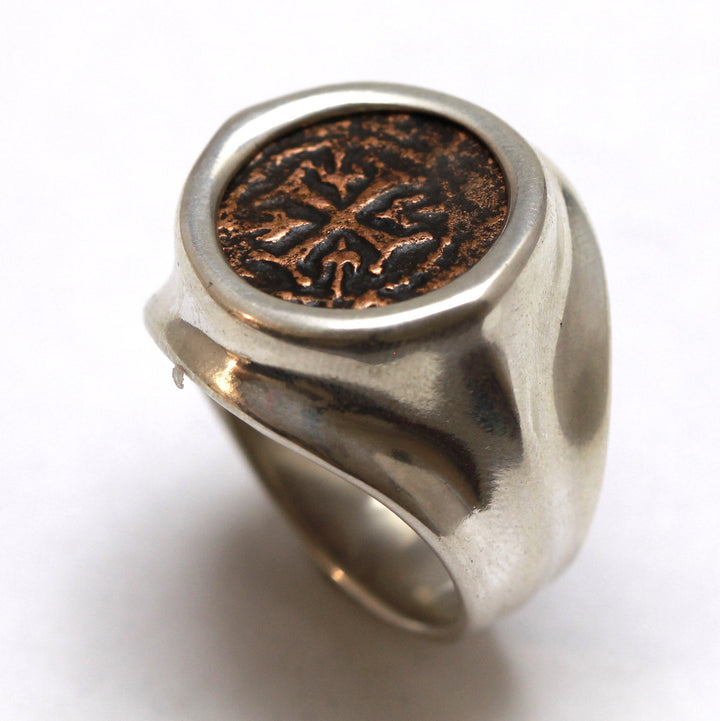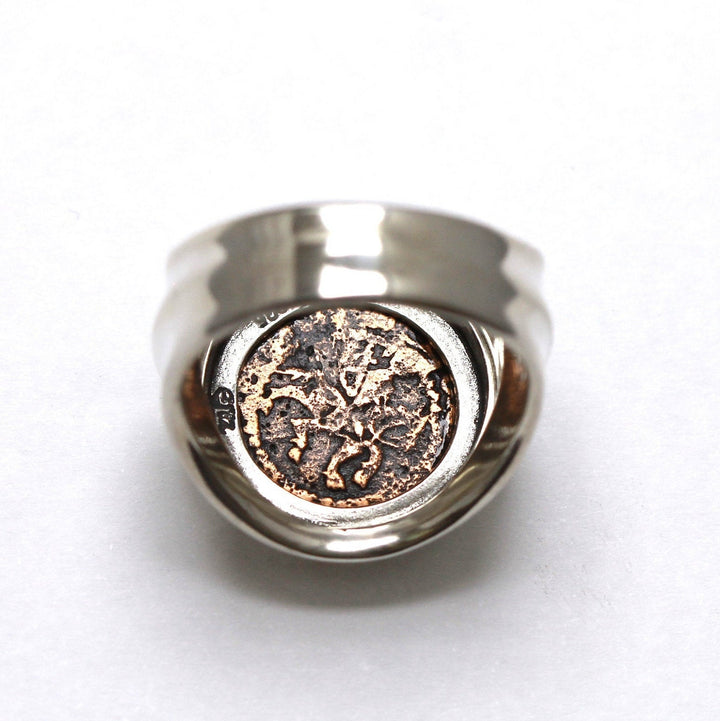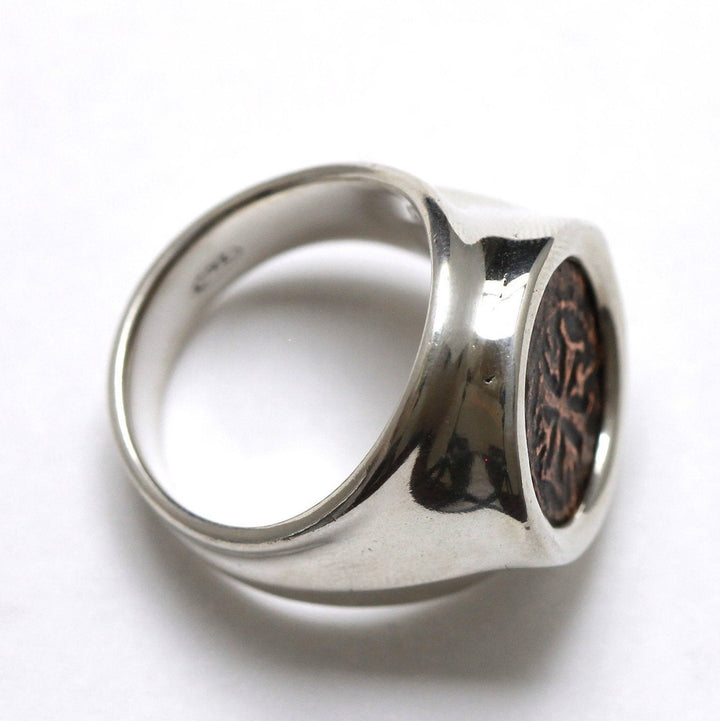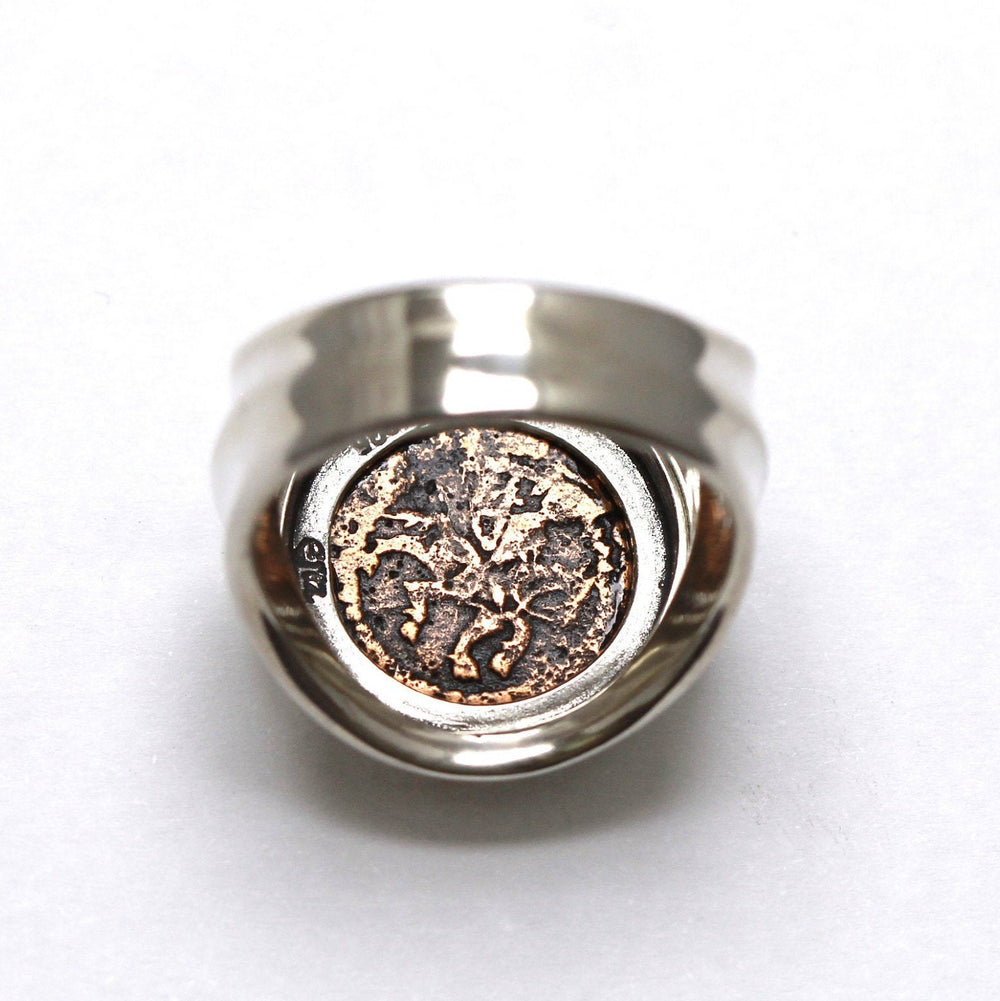Sterling Silver Ring, Hetoum II, Kardez, 7085
- Low stock - 1 item left
- Inventory on the way
Sizing Range: 7-14
Denomination: Kardez Date: 12th Century CE
History: Upon the death of Levon on May 2, 1219 AD, the throne was left to his young daughter, Zabel. Hetoum, son of Catholico constable Constantine, married Zabel in 1226 AD, which linked the two most powerful families of the realm. Upon this union, the new king and queen Hetoum and Zabel issued a joint-portrait tram, and Hetoum issued a new, smaller-denomination copper kardez in addition to his own large copper tank series.
The tanks of Hetoum I follow the design standard set by the silver trams of his predecessor, Levon I. All of his coins bear only his name, although his tram issues bear the likeness of both him and his royal queen, Zabel. He issued two types of kardez, one depicting himself seated on a bench-like throne, whereas the other "equestrian" issue shows him on horseback. On the reverse of all Cilician issues, however, can be found one standard design element: The patriarchal or Crusader-type cross, in various forms
Armenia was so closely associated with the crusader states that it can be properly considered with them. Christianity had been the state religion since King Tiridates III was converted by Gregory the Illuminator in 301 CE. At that time Tiridates declared Christianity as the national religion, the first country in the world to do so, some 20 years before Constantine the Great did the same for the Roman Empire.
As with many Central European countries, Armenia has had a long history of devout Christian faith actually left the native area, and founded a new nation near the Mediterranean Sea, called “Lesser Armenia.” Geographic proximity brought “Lesser Armenia” into close contact and influence with the crusader and Europe. Western ideas, social structure, language, and art were adopted and flourished. This was considered the “Golden Age of Armenian Illumination.”




